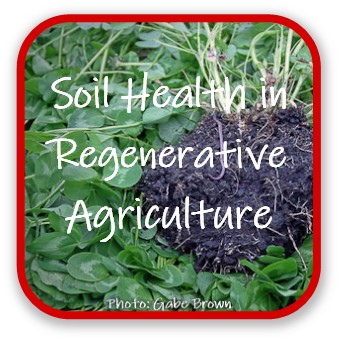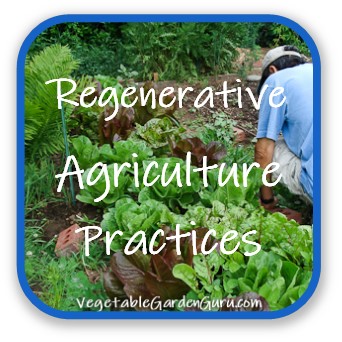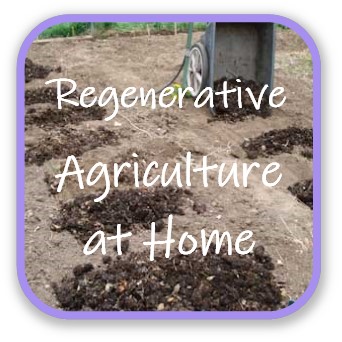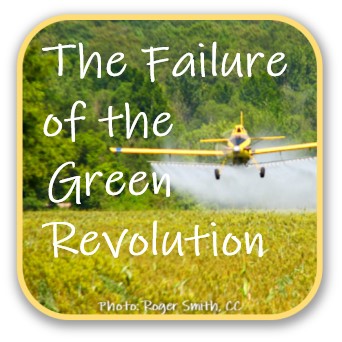- Home
- What Is Regenerative Agriculture?
What is Regenerative Agriculture?
What is regenerative agriculture? It is a way of growing food that is
not only sustainable forever without artificial inputs, but that repairs
the damage we have inadvertently caused to soil and natural ecosystems
by modern chemical/industrial farming practices.
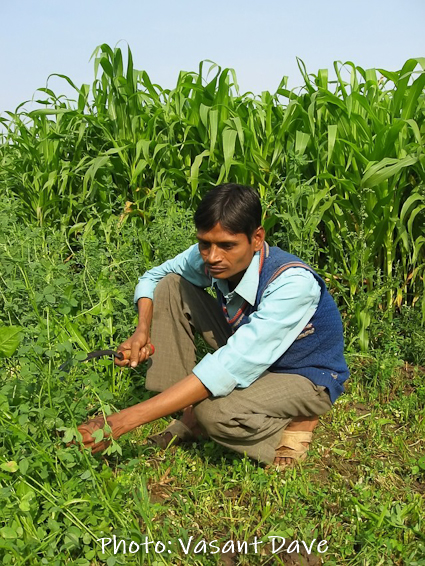 An Indian Farmer Trimming Back a Legume Cover Crop Before Planting Corn
An Indian Farmer Trimming Back a Legume Cover Crop Before Planting CornIndigenous people around the globe knew how to successfully grow plants for thousands of years without using chemical fertilizers or poisons, or damaging topsoil.
What is regenerative agriculture now? A sophisticated new adaptation of many of
these indigenous practices, along with new techniques driven by the
latest research on the importance of a healthy, thriving soil ecosystem to plant health and vitality.
How does the soil ecosystem contribute to healthy plants? What do worms and germs have to do with healthy plants and healthy people?
Turns out, everything. Like human gut bacteria that helps us digest our food, bacteria (and other organisms) in the soil help plants "digest" food. It is as though the plants' digestive is system is on the outside of the roots.
Certain bacteria provide nitrogen so plants can develop proteins, and certain fungi bring trace elements to the plants in exchange for the sugars that plants made through photosynthesis. For more on the many functions of the soil ecosystem, read Regenerative Agriculture and Soil Health.
Regenerating The Soil Ecosystem
Soil scientists are discovering that there are many critical symbiotic relationships going on below ground between plants and microbes. Abundant, healthy microbial life is the key to healthy soil that resists drought and erosion, grows plants with natural disease and pest resistance, and burst with nutrition and flavor.
Modern agricultural practices, including tilling and the use of more than a billion
pounds of chemicals every year, kill the soil ecosystem. (For more on this, see The Failure of the Green Revolution.) Scientists
are just beginning to realize the devastation this has caused, and are studying regenerative agriculture's practices as a working solution for healing soil, and in turn, human and planetary health.
30% of the world's cropland has been abandoned in the last 40 years due to soil decline, and over the last 70 years the levels of every nutrient in food has dropped by between 10 and 100%. (1)
Soil researcher Christine Jones, PhD states that "An individual today would need to consume twice as much meat, three times as much fruit and four to five times as many vegetables to obtain the same amount of minerals and trace elements as available in those same foods in 1940." (2)
It is because chemical agriculture has killed the soil ecosystem that plants no longer have access to the truly deep nutrition that a healthy soil ecosystem provides. It's time to change how we grow food.
Now.
What is regenerative agriculture? It may sound grandiose, but the science is there: it is the solution to soil health, human health and planetary health.
What Is Regenerative Agriculture?
A Side-by-Side Comparison
|
What is Industrial |
What Is Regenerative Agriculture? |
|
Tills or plows the soil, which compacts soil, kills worms, microbes and fungi, and drives carbon into the atmosphere |
Uses roots of living plants year-round to keep soil loose, produce sugars to feed soil life, and keep carbon underground |
|
Uses salt-based fertilizers that kill worms, good microbes, and symbiotic fungi |
Uses natural minerals that are mediated by mycorrhizal fungi and good microbes |
|
Uses poison to kill insects, both pests and pollinators alike (bees, butterflies, etc.) |
Maintains balanced ecosystem that keeps pests in check and protects pollinators |
|
Uses herbicides to kill weeds, which drives weeds to develop resistance and drives the use of ever-more-toxic chemicals |
Maintains diversity of plant species in food, pasture, and cover crops, which keeps weeds in check |
|
Uses lab-created (GMO) seeds that may contain blended genes of plants and animals, be deadly to insects, resist herbicides or have other unnatural properties |
Uses only naturally-bred seeds |
|
Destroys the soil ecosystem and forces plants to depend on chemical substitutes |
Regenerates, maintains and feeds the soil ecosystem that naturally feeds plants |
|
Destroys soil structure, leading to runoff, wind and water erosion, drought-intolerance, poor moisture absorption/ retention, loss of fertility, susceptibility of crops to disease and insect attack, low nutrition in plants |
Builds and maintains soil structure, leading to excellent water infiltration and retention, drought resilience, retained soil fertility, natural resistance to pests and diseases and high nutrient-density |
|
Drives most carbon into the atmosphere |
Sequesters most carbon underground |
|
Drives small farmers out of business through prohibitively expensive chemicals, machinery, and patented seeds |
Frees farmers from unaffordable inputs and puts them back in charge of farm management practices |
|
Grows weakened, low-nutrition food that ships well, appears attractive after many days, and is appropriate for the processed-food and pharmaceutical industries |
Grows robust and vibrant food appropriate for people who want to eat fresh, flavorful, nutrient-dense food bursting with vitamins and minerals |
Want to Learn More?
Check Out These Two Regenerative Agriculture Superheroes
If you're interested in the evolving science of boosting nutritional density in produce, restoring the soil ecosystem, and reversing global warming, check out these two organizations.
Bionutrient Food Association founder Dan Kittredge is a brilliant organic farmer in Massachusetts who has enlisted growers, engineers and scientists in a consortium dedicated to determining exactly which growing techniques boost nutrient density, and how to measure that nutrient density in an easily-implementable way. He organizes the annual Soil and Nutrition Conference, bringing in cutting-edge growers, scientists, authors, and forward-thinking food industry executives together to learn from each other and brainstorm together.
Regeneration International lives its mission statement: "To promote, facilitate and accelerate the global transition to regenerative food, farming and land management for the purpose of restoring climate stability, ending world hunger and rebuilding deteriorated social, ecological and economic systems."
References
1) Christine Jones, PhD: Light Farming: Restoring carbon, organic nitrogen and biodiversity to agricultural soils (www.amazingcarbon.com)
2) ibid,
Help share the skills and spread the joy
of organic, nutrient-dense vegetable gardening, and please...
~ Like us on Facebook ~
Thank you... and have fun in your garden!
Affiliate Disclaimer
This website contains affiliate links to a few quality products I can genuinely recommend. I am here to serve you, not to sell you, and I do not write reviews for income or recommend anything I would not use myself. If you make a purchase using an affiliate link here, I may earn a commission but this will not affect your price. My participation in these programs allows me to earn money that helps support this site. If you have comments, questions or concerns about the affiliate or advertising programs, please Contact Me.Contact Us Page
